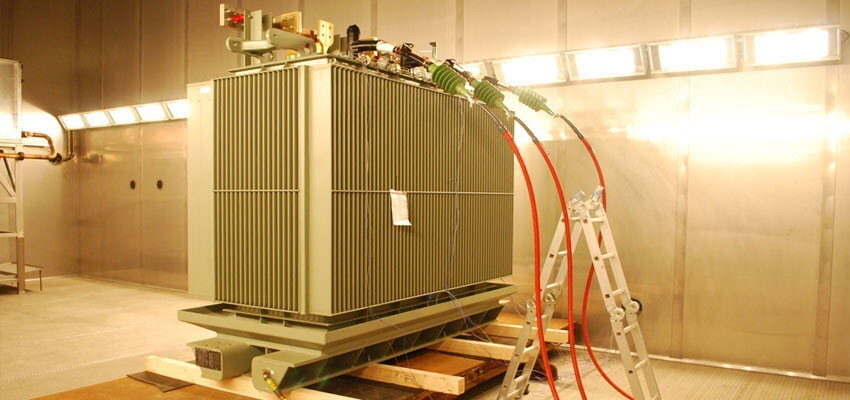
Cold start of a 5.5 MVA offshore transformer
Abstract SLIM® transformers are compact liquid-immersed transformers according to IEC 60076-14 and customised for typical applications such as on- and off-shore wind turbines. State of...
byPieter Jan Jordaens, Bram Cloet, Jama Nuri and Raymond Van Schevensteen

Abstract
SLIM® transformers are compact liquid-immersed transformers according to IEC 60076-14 and customised for typical applications such as on- and off-shore wind turbines. State of the art SLIM® wind turbine generator transformers (WTGT) have to operate in wind farms which are often located in remote locations with harsh conditions and sometime very low temperatures. After a few days of no wind the transformer can be cooled down to -30 °C or even -40 °C so these conditions need to be tested in advance.
To ensure the reliability of CG Power System Belgium’s WTGT’s and the possibility to start in cold conditions, several tests were conducted in OWI-Lab’s large climatic test chamber. OWI-Lab’s test facility is the first public test centre in Europe that deals with extreme climatic tests of heavy machinery applications up to 150 tonnes with a special focus on wind turbine components.
CG wants to prove that when WTGT’s have to operate in cold conditions, the internal cooling is still working properly. Due to higher viscosity at low temperature of the used cooling liquids, the natural convection cooling of the internal windings may be limited. According to the properties of the cooling liquid that is used inside the WTGT, it remains ‘liquid’ above -45 °C (pour point), but due to the high viscosity, the natural convection may be limited and there is a possibility that the initial losses generated inside the transformers’ windings cannot be evacuated fast enough. To verify if the natural convection starts, a full load cold start test was conducted at -30 °C to prove that the natural cooling of the internal windings starts immediately. During the cold start test the internal pressure and several temperatures such as the top oil were measured. Also a storage test was done at -40 ºC to check if the transformer can resist this ambient temperature. This storage test was conducted to prove that no leaks or other visual issues occurred on the tank and gaskets.
Keywords: controlled cold climate testing, Bio-SLIM® transformers, extreme cold start behaviour, live component testing
1. Introduction
SLIM® transformers are highly reliable, low loss, high-temperature liquid-immersed transformers according to IEC 60076-14, customised for typical applications such as installation in WTG [1] [2]. Their cooling liquid (silicone fluid in SLIM® and synthetic ester in Bio-SLIM®) is fire class K3 as per IEC 61100.
First, a storage test was done at -40 °C on a synthetic ester-filled Bio-SLIM® transformer. Secondly, a cold start test was done on this Bio-SLIM® transformer to verify that the transformer is able to cope with a full load start after the transformer had been cooled down to -30 ºC. These tests were conducted at the brand new climate chamber of OWI-lab located in the port of Antwerp [3].
2. Description of test object
The tests are performed on a synthetic ester filled off-shore WTG Bio-SLIM® transformer with the following properties:
Rated power: 5560 kVA
High voltage: 33 kV
Low voltage: 690 V
Short circuit impedance: 12 %
Total losses: 50 kW
Total mass: Approx. 11 ton
Cooling Liquid: Synthetic ester (integrally filled)
3. The need for cold start testing
In the following paragraphs the reasons to test transformer at extreme cold environments are explained.







